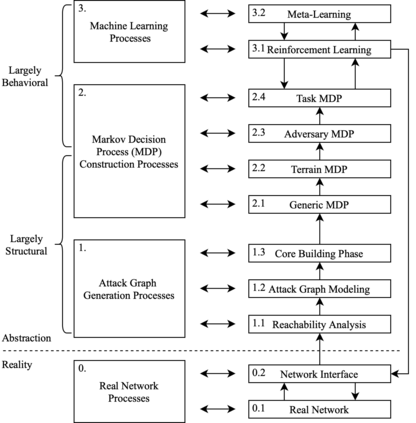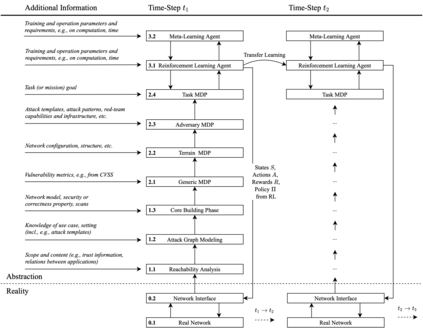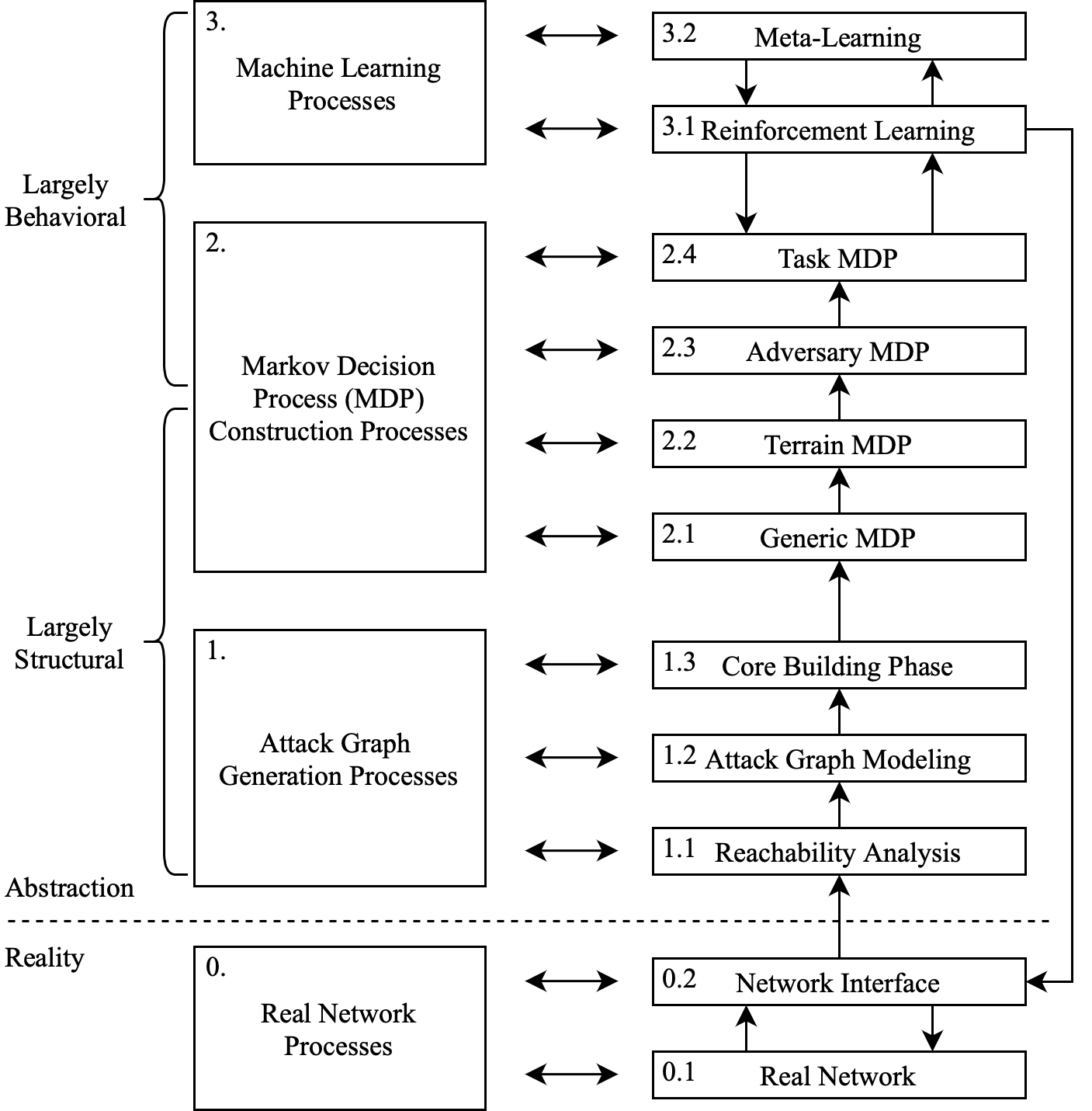This paper considers key challenges to using reinforcement learning (RL) with attack graphs to automate penetration testing in real-world applications from a systems perspective. RL approaches to automated penetration testing are actively being developed, but there is no consensus view on the representation of computer networks with which RL should be interacting. Moreover, there are significant open challenges to how those representations can be grounded to the real networks where RL solution methods are applied. This paper elaborates on representation and grounding using topic challenges of interacting with real networks in real-time, emulating realistic adversary behavior, and handling unstable, evolving networks. These challenges are both practical and mathematical, and they directly concern the reliability and dependability of penetration testing systems. This paper proposes a layered reference model to help organize related research and engineering efforts. The presented layered reference model contrasts traditional models of attack graph workflows because it is not scoped to a sequential, feed-forward generation and analysis process, but to broader aspects of lifecycle and continuous deployment. Researchers and practitioners can use the presented layered reference model as a first-principles outline to help orient the systems engineering of their penetration testing systems.
翻译:本文从系统的角度探讨了使用强化学习(RL)和攻击图将现实世界应用中的渗透测试自动化的关键挑战。正在积极开发自动渗透测试的RL方法,但对于计算机网络的表示,RL应与之互动,没有共识的看法。此外,对于如何将这些表达方法根植于应用RL解决方案方法的真正网络方面,存在着巨大的公开挑战。本文件阐述了在使用实时与真实网络互动、模拟现实对抗行为以及处理不稳定和不断变化的网络方面所遇到的主题挑战,说明其代表性和地面地位。这些挑战既实用又具有数学意义,直接涉及渗透测试系统的可靠性和可靠性。本文提出了有助于组织相关研究和工程工作的分层参考模型。所提出的分层参考模型与攻击图形工作流程的传统模型相比,因为它的范围不是按顺序、进取的生成和分析过程,而是生命周期和持续部署的更广泛方面。研究人员和从业人员可以使用所展示的分层参考模型作为第一原则大纲,帮助其渗透测试系统的系统设计或定向。








